 Collaboration
CollaborationThe Collaboration for Astronomy Signal Processing and Electronics Research (CASPER) has been working for a decade to reduce the time and cost of designing, building, and deploying new digital radio-astronomy instruments. Today, CASPER technology powers over 45 scientific instruments worldwide. A significant contribution to these innovations comes from Digicom Electronics, an electronics manufacturing services (EMS) company that has been manufacturing in the California Bay area since 1982. Digicom, along with a team of researchers, engineers, and scientists, developed a Reconfigurable Open Architecture Computing Hardware (ROACH) system that forms the foundation upon which all these products are built.
This paper describes the history of this system, the collaboration with major universities, research institutes, government organizations, the scientific community, and industry, and details some of the break-through innovations and initiatives that were spawned as a result.
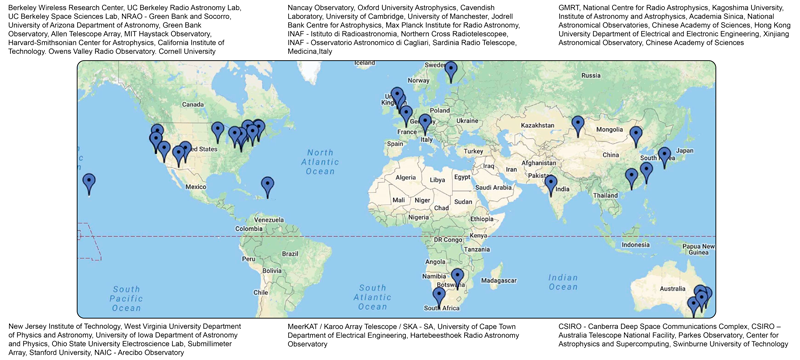
Figure 1. ROACH collaboration around the world
Around 2005, Mo Ohady, the general manager of Digicom Electronics, was approached by the University of California Berkeley and South Africa's Square Kilometer Array (SKA), whose scientists were affiliated with CASPER. Several in the group had worked with Digicom previously to help with prototype builds, so were familiar with the company and capabilities. Their idea was to design a system that could be used to foster CASPER's goal of creating platforms using digital processing hardware with which the scientific community could collaborate and develop new technologies, especially for radio telescopes.
This was a true collaboration and collective group effort of many scientific, government, research, engineering, and educational institutions and organizations around the world. Digicom serves as the central core and project manager for the collaboration, taking the vision and engineering design concepts, supplying the base systems, such as ROACH, integrating the hardware, power supplies, and software, providing the assembly and test services, and turning the ideas into finished turnkey systems.
This collaboration led to the development of generational systems, starting with the Interconnect Break-out Board (IBOB), intricate modules and box-build projects such as the Interconnect Analog to Digital Conversion (IADC) board, and subsequently, the ROACH systems. ROACH1 is a Virtex5-based system, while ROACH2 hosts a Virtex6 hardware system that includes built-in flexibility with high bandwidth and capacity DRAM memory and standalone usage with 10 Gb and ZDOK.
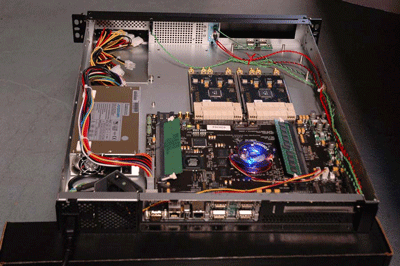 The ROACH system takes the baseband data from the most powerful radio telescopes, changes it from analog to digital, and applies sophisticated digital signal processing filtering techniques to derive information about the universe. These systems are customized for each application. For example, some applications require downloading a tremendous amount of data quickly, while others necessitate selectively downloading the data.
The ROACH system takes the baseband data from the most powerful radio telescopes, changes it from analog to digital, and applies sophisticated digital signal processing filtering techniques to derive information about the universe. These systems are customized for each application. For example, some applications require downloading a tremendous amount of data quickly, while others necessitate selectively downloading the data.
Figure 2. ROACH board shown in 1.3 U ATX-compatible enclosure on 19" rack mount
The base system hardware that was developed from this collaboration has been extensively used in a variety of astronomical instruments, including some of the largest, most advanced telescopes ever built. These include the Square Kilometer Array (SKA), the Five- hundred-meter Aperture Spherical radio Telescope (FAST), and the Robert C. Byrd Green Bank Telescope (Roshi). Some hardware has also gained traction outside of radio-astronomy and has been adopted by Manastash Ridge Radar to create a frequency-agile, high bandwidth passive radar system for detection of aerospace and geoscience targets. Groups deploying Microwave Kinetic Inductance Detector (MKID) systems, which use multiple micro-resonators as mm/submm photon detectors, have been a key user of this technology, and future MKID ADCs (with A to D convertor on board) are in development, aided by Digicom manufacturing support.
Figure 3. Some of the 45 observatories include the LWA-LEDA, Green Bank Telescope, and the Five-hundred-meter Aperture Spherical radio Telescope (FAST).
Papers are now being published, detailing many of the projects, their development, and the scientific breakthroughs and accomplishments that were enabled through this collaboration. Below is just a sampling.
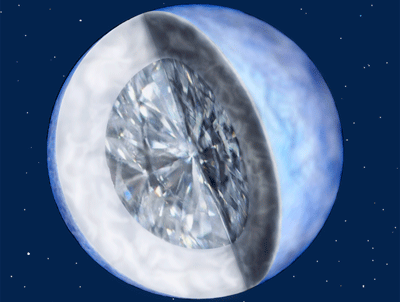 Discovery of the Diamond Planet – A star that changes into a diamond planet? What sounds like science fiction is apparently reality. The discovery was made by an international team of scientists from Australia, Italy, Great Britain, the USA, and Germany, including Michael Kramer from the Max Planck Institute for Radio Astronomy in Bonn, Germany. The researchers found the diamond planet with the help of the 64-metre Parkes radio telescope in Australia. The planet apparently orbits around an unusual, very dense star, a pulsar. See Figure 4. Diamond planet discovery from Parkes. Matthew Bailes, et al.
Discovery of the Diamond Planet – A star that changes into a diamond planet? What sounds like science fiction is apparently reality. The discovery was made by an international team of scientists from Australia, Italy, Great Britain, the USA, and Germany, including Michael Kramer from the Max Planck Institute for Radio Astronomy in Bonn, Germany. The researchers found the diamond planet with the help of the 64-metre Parkes radio telescope in Australia. The planet apparently orbits around an unusual, very dense star, a pulsar. See Figure 4. Diamond planet discovery from Parkes. Matthew Bailes, et al.
Fast Radio Burst Detections – A fast radio burst (FRB) is a high-energy astrophysical phenomenon of unknown origin manifested as a transient radio pulse that lasts only a few milliseconds. A new class of objects, FRBs have been discovered in radio pulsar surveys at Parkes and Arecibo within the last decade. Recent efforts in time-domain radio astronomy have focused on real-time FRB detection with the promise of rapid follow-up of new events. Such capability was recently made possible with the development of a real-time transient pipeline at the Parkes telescope.
SETI@home – SETI@home is a scientific experiment, based at UC Berkeley, Oakland, CA, that uses Internet-connected computers in the Search for Extraterrestrial Intelligence (SETI). Raw data from some 4 million, and growing, people is fed into SETI@home to aid research.
Mapping and Animation of the Inside of Black Holes – How this was accomplished, how it's being used, and its significance can be found in works published by the Harvard-Smithsonian Center for Astrophysics.
Neutron Radiography – This is a non-destructive imaging technique that uses thermal neutrons to probe the sample.
The original collaboration continues to produce systems that illuminate the intricacies and wonders of the universe.
"Involvement with CASPER and its participants has been a very rewarding experience in terms of the achievements I have seen and the opportunity to interface with some of the best minds in science and research," said Mo Ohady, general manager of Digicom Electronics. "As I reflect on the depth of knowledge, innovation, and scientific advancement that this collaboration has spawned, I can attest to the fact that these guys are the real heroes of the high-tech world."
Acknowledgement and thanks to contributions made by Dan Werthimer, founder of CASPER, SKA group of scientists and engineers, Matt Dexter, Jack Hickish, SINICA Taiwan, NASA Group, NCRA, Pune India, Harvard-Smithsonian SAO, as well as many other groups and research centers around the world for their respective help with the collaboration and for providing information and support. Visit https://casper.berkeley.edu for more information.
Sources: A Decade of Developing Radio-Astronomy Instrumentation using CASPER Open-Source Technology, Jack Hickish et al., Berkeley, CA, Journal of Astronomical Instrumentation @World Scientific Publishing Company, November 6, 2016
Max Planck Institute for Radio Astronomy, Bonn, Germany
Additional articles published about CASPER and its innovations can be found at: eventhorizontelescope.org
"Digicom Electronics and CASPER'S Technology Open Endless Possibilities for Astronomy and Aerospace Innovation and Collaboration."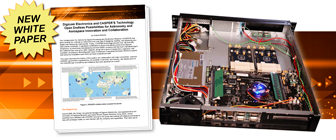
Today, CASPER technology powers over 45 scientific instruments worldwide. A significant contribution to these innovations comes from Digicom Electronics and its ROACH system. Read it here.
"Process Validation 101," an important component in the design, prototyping and manufacturing process and one, if done correctly, that can save a considerable amount of time, money and resources. Free white paper.
"Cleanliness of PCB Assemblies Leads to Medical Device Reliability," is now available for download.
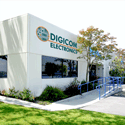 Digicom Supports the Return of Electronic Assemblies Manufacturing Onshoring with Prioritized Intellectual Property Protection. Digicom is well positioned to support the ongoing trend to onshore electronics manufacturing back to America. Read more here
Digicom Supports the Return of Electronic Assemblies Manufacturing Onshoring with Prioritized Intellectual Property Protection. Digicom is well positioned to support the ongoing trend to onshore electronics manufacturing back to America. Read more here
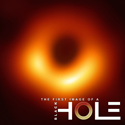
Digicom's ROACH System Captured the Data that Enabled Scientists to See the First Image of a Black Hole. Digicom has worked with the Collaboration for Astronomy Signal Processing and Electronics Research (CASPER), the Event Horizon Telescope (EHT) project, the University of California Berkeley, and many other institutes, researchers, engineers, and scientists from around the world for more than a decade. Read more here
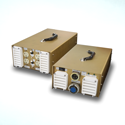 Digicom Electronics Introduces Portable, Lightweight, 400 Hz Power Converter for On-site Aircraft Maintenance. Digicom Electronics Introduces Portable, Lightweight, 400 Hz Power Converter for On-site Aircraft Maintenance. Details here
Digicom Electronics Introduces Portable, Lightweight, 400 Hz Power Converter for On-site Aircraft Maintenance. Digicom Electronics Introduces Portable, Lightweight, 400 Hz Power Converter for On-site Aircraft Maintenance. Details here
 Digicom Electronics announces it has received aerospace cerfication AS9100:2016 (RevD) & ISO 9001:2015, and is one of the first EMS companies to achieve it. Learn more
Digicom Electronics announces it has received aerospace cerfication AS9100:2016 (RevD) & ISO 9001:2015, and is one of the first EMS companies to achieve it. Learn more